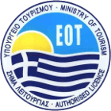The natural beauty of Messinia with its curved coasts, sandy beaches, forested mountains, and fertile valleys coexists with significant archaeological monuments.
The history of Kalamata begins with Homer, who mentions “Farai,” an ancient city built around where the Castle of Kalamata stands today. After gaining independence from the Turks and thanks to the exploitation of the fertile Messinian land (production of olive oil, raisins, figs, etc.), it evolved into a wealthy urban center and an important port. It is located 238 kilometers southwest of Athens.
In this article, after analyzing the city’s main attractions, we will focus on the means of transportation from Athens to Kalamata.
The City of Kalamata – The Most Famous Attractions The quintessential reference point in the city of Kalamata is the legendary “castle of Isabeau,” where the famous International Dance Festival is held every year. It is amphitheatrically built on the site of the Farai acropolis, offering a unique view of the city from above. Constructed in the 13th century by William Villehardouin, it underwent subsequent additions and modifications by the Venetians and the Turks. Today, it serves as an ideal outdoor space for theatrical, musical, and dance performances.
Equally beautiful is the Old City (Palia Poli) at the foot of the Castle. The wider area boasts the metropolitan church of Panagia Ypapanti (1873), the patron saint of Kalamata celebrated on February 2nd, the 12th-century Monastery of Kalograion with its famous silk weaving workshop, and the Byzantine church of the Holy Apostles (13th century) with its brick-built enclosed masonry. The area is the hotspot for the city’s youth, as it is the heart of Kalamata’s nightlife!
In the city’s streets, besides churches and castles, you can also find more modern “exhibits.” These include the Town Hall and the municipal theater. Furthermore, the city is adorned with a multitude of squares and parks, such as the spacious central square of King George with many cafes, meeting places, and walking areas for residents and visitors. From there begins the pedestrian street of Aristomenous with many shops. To the west of the square, the neighborhood unfolds around the picturesque railway station with a network of pedestrian streets, bars, and taverns.
In Kalamata, you will also find many museums. The most important of these is the Benakeio Archaeological Museum (housed in the neoclassical building of the old Municipal Market) with findings dating from the Bronze Age to the Roman period. The Folklore and Historical Museum, housed in the Kyriakou mansion, features traditional objects and relics from the 1821 Revolution. Lastly, the Gallery of Modern Greek Art, with paintings and sculptures, is particularly esteemed.
Saving the best for last – the city’s beach. At the beach of Kalamata, people can swim in crystal-clear waters and enjoy beaches that have received the Blue Flag quality award. Along the beach, there are several taverns, ouzeries, cafes, bars, clubs, while beach lovers can enjoy all kinds of water sports.
How to Travel from Athens to Kalamata by Private Transport To travel from Athens to Kalamata by private transport, you can follow the instructions below:
Choice of Transport: Private car: You can drive your own car or rent one. Taxi: You can book a taxi for the journey. Route: From Athens, start towards the south road of Greece, which connects Athens with Kalamata. Follow the E65 national road southward. You will pass through cities and areas such as Corinth, Tripoli, and Sparta as you head towards your destination. Distance and Duration: The distance from Athens to Kalamata is approximately 240-260 kilometers, depending on the specific route you follow. The duration of the journey depends on traffic conditions and your speed, but it usually takes about 3.5 – 4.5 hours to reach Kalamata from Athens by car. Tolls and Costs: During the journey, you will encounter tolls that need to be paid. Check the current prices before starting your trip. Make sure you have enough fuel, water, and other necessary supplies for the journey. Also, pay attention to traffic warnings and road conditions for safety.
The Castle of Methoni If you visit Kalamata, you must also visit the castle of Methoni! In southeastern Messinia, on the first leg of the Peloponnese peninsula, there are two beautiful towns: the picturesque Methoni overlooking the Ionian Sea and the island complex of the Oinousses, as well as the colorful Koroni, a place with an island atmosphere. Thanks to their strategic position, they were significant commercial and maritime centers. For the same reason, they were always coveted by the powerful of the time. This explains the need for the construction of huge fortresses.
Built by the Venetians at the beginning of the 13th century on a rocky promontory, the castle of Methoni is one of the largest in the Mediterranean. You will be amazed by the stone bridge with 14 arches that connects the castle to the shore. The famous symbol of Venice, the lion of Saint Mark, dominates the castle’s gate.
At the southern edge of the castle floats a fortified islet. The Bourtzi, as it is called, a prison and execution site during the Turkish rule, was built in 1500 and is connected to the sea gate of the castle by a cobblestone miniature road.
How Can You Travel to Kalamata? Initially, you can approach this beautiful city of the Peloponnese by bus. If you start from Athens, the bus journey duration (Athens-Kalamata) is about 3 hours and 15 minutes, covering a distance of approximately 238 kilometers. The routes are operated by KTEL Messinias. Usually, 61 bus routes are operated weekly, although schedules on weekends and holidays may differ, so check in advance.
Another option is to go by your own car via the National Road. The duration of the route is approximately 2.5 hours with 120 km/h being the maximum speed limit.
These are the 2 best options.

